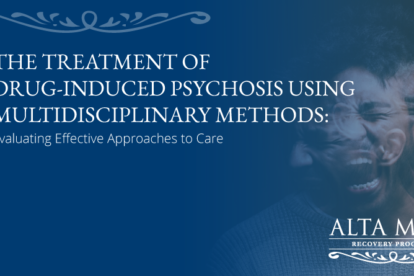
Is Tramadol Addictive?
Tramadol is a synthetic opioid that is often compared in similarity to opiates such as morphine. Like other narcotic medications that are used to treat moderate to moderately severe pain, those who use tramadol may misuse it and become addicted to it. Tramadol was initially thought to be a painkiller that was a safe alternative to drugs known to be very addicting. It’s becoming apparent, however, that tramadol is much more addictive and dangerous than originally believed.
When people think of addiction to painkillers, they often think of substances like OxyContin, which is a medication so highly addictive that it is frequently referred to in the news as “an epidemic.”
Many painkillers have an extremely high potential for addiction and overdose.
In an attempt to avoid this, doctors are making an effort to prescribe drugs for pain that have a lower risk of abuse and dependence.
What Is Tramadol?
Tramadol is an opioid that is often prescribed when over-the-counter pain medications have not been effective at relieving pain. It may be also prescribed for conditions such as cancer or for pain following a surgery or injury. Brand names of tramadol include Ultram and ConZip. Tramadol is available in both immediate release and extended release tablets.
This pain medication works by attaching to receptors in the brain to alter the perception of pain and to block pain signals in the spinal cord. It is classified as a Schedule IV controlled substance and is known to be associated with misuse and addiction. Using tramadol in any way other than prescribed can lead to overdose and potentially death.
Effects of Tramadol
A person who is experiencing moderate to severe pain may obtain pain relief from using tramadol, but they may also experience some side effects. Side effects common in prescription painkillers include:
- Dizziness
- Drowsiness
- Loss of appetite
- Nausea and vomiting
- Constipation
Side effects specific to tramadol include:
- Headache
- Congestion
- Sore throat
- Flushing
- Itching
- Seizures
- Weakness
Minor effects of tramadol may subside after taking the medication for a few days. More serious side effects may develop in some people, such as hypersensitivity reactions that may include:
- Skin rash
- Trouble breathing
- Swelling of the tongue or throat
Users may also experience irritability or mood swings.
Unpleasant effects of tramadol are more likely to be intense in people who have illnesses such as chronic obstructive pulmonary disease, kidney disease or liver disease. Very serious side effects may develop in people who have a history of breathing difficulties. Effects may also be intensified when the drug is mixed with alcohol or medications that cause drowsiness, such as anti-anxiety medications or narcotic pain relievers.
Begin Your Recovery Journey Today
866-922-1350How Tramadol Addiction Develops
For some people, tramadol addiction may develop accidentally. These people may feel that the dose the doctor has prescribed is too low to relieve their pain. But taking higher doses than prescribed can lead to tolerance, which means that a progressively larger dose is needed to obtain the same effect.
Tolerance is followed by dependence. Once you have become dependent on a substance, discontinuing use can lead to unpleasant and possibly dangerous withdrawal symptoms. When you are physically and psychologically dependent on a substance, you have developed an addiction.
A person with substance use disorder may deliberately take high doses of painkillers in order to experience feelings of energy and euphoria. When taking high doses of tramadol is done habitually for a period of time, the person may develop tramadol addiction. At this point, compulsion to use the drug has become all-consuming, and discontinuing its use is difficult or even impossible without help.
Tramadol Withdrawal
If you have become addicted to tramadol and try to suddenly stop taking it, you will begin to experience withdrawal symptoms. Tramadol withdrawal symptoms include:
- Restlessness
- Sweating
- Chills
- Anxiety
- Muscle or joint pain
- Weakness
- Insomnia
- Nausea or vomiting
Overcoming Tramadol Addiction
If you have become addicted to tramadol, professional help will likely be needed to overcome it. Cravings for the drug and overpowering withdrawal symptoms will make you want to give in to the urge to take more of the medication.
If you have been misusing tramadol along with other substances at the same time, you should be supervised during detoxification. Medications can be administered that can reduce the severity of your withdrawal symptoms. Once the medication is out of your system, you can begin the journey of learning to face life’s challenges without dependence on tramadol or other substances.






